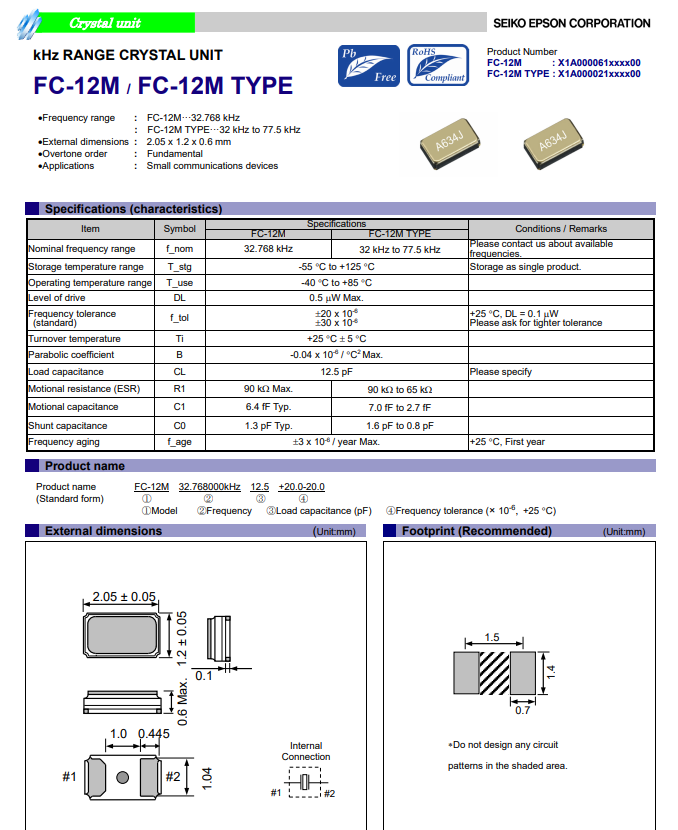POP_UP_MESSAGE_CONTENT


EPSON石英晶体FC-12M编码X1A000061003200在电子设备中的6G晶振应用
EPSON石英晶体FC-12M编码X1A000061003200在电子设备中的6G晶振应用
石英晶体,切角,压电材料,尤其是石英晶体,具有将电能转化为机械能的特性,反之亦然。在技术应用中,通过施加交变电场来利用这种效应,这将导致材料振动并随后机械共振。这种电反应允许用作县有非常高的品质因数Q和低温度系数的电谐振器。
晶体谐振器的有源元件是一个机械振动板(“晶体元件”),它由单晶石英切割而成,与晶轴具有精确的取向。谐振器在高真空下镀有铝、银或金电极,并通过冷焊或电阻焊接工艺密封在合适的外壳中。元件的物理尺寸和它相对于轴的方向将特别决定谐振频率、它的初始精度、它的电特性和温度系数。EPSON晶振生产AT切割和SC切割晶体(及其他),这是应用最广泛的切割方式,频率范围从800KHz到300MHZ,具有出色的频率-温度特性。EPSON石英晶体FC-12M编码X1A000061003200在电子设备中的6G晶振应用。
所有晶体谐振器为每个泛音产生一个主模式,即厚度切变振动,以及多余的响应,即谐振频率以上的非谐波厚度切变模式。除了常用的厚度剪切C模式外,还存在另一种厚度剪切模式,称为B模式。与C模式相比,它具有更高的频率和更低的动态电阻,但温度系数更大。有时,为了让振荡器在C模式下工作,有必要对该模式进行滤波。其他不需要的模式是剪切、弯曲。厚度和扭转振动,它们可能出现在所需的共振频率之上或之下。通过正确的振荡器设计,无用的模式很少引起问题。接近谐振频率的不需要的模式会影响振荡器的启动行为,或者导致在操作期间偏移到错误的频率。其他不良影响包括由不良模式引起的频率和电阻随温度的下降。寄生模式通常定义为非谐模式的谐振电阻与主模式电阻之比。
石英晶体在电子设备中的应用:
石英晶体有多种用途,有很多好处。
石英晶体在手表、收音机和电视机生产中如此有用的主要好处之一是它们稳定而精确的频率控制。我们可以在计时、IT和通信产品中看到这一点:
计时:石英音又用于石英表、时钟和任何其他需要记录时间的设备,因为它们具有非常稳定和准确的频率,使它们成为计时的理想选择。
信息技术和通信:石英还用于各种技术应用,主要用于电子设备、无线电和电视中的精密频率标准、光纤通信系统以及数字设备的定时控制。
随着我们技术的进步,我们对电子产品的依赖和使用迅速增加,石英晶体变得越来越重要,现在有数十亿颗石英品体用于各种电器。
从电脑和智能手机到收音机和GPS设备,石英晶体现在是我们日常生活中依赖的许多最常用电器的核心组件。

















